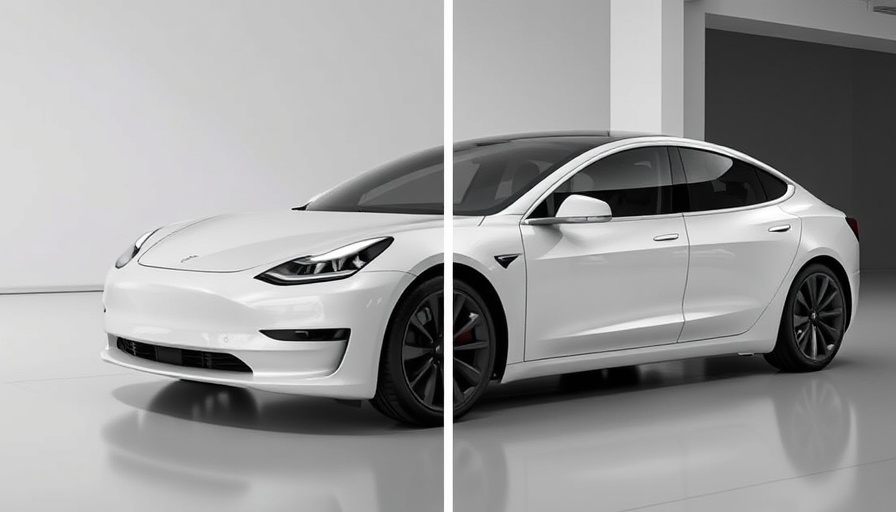
Examining the Prospects of Cheaper Tesla Models Amid Market Changes
The recent unveiling of the cheaper Tesla Model 3 Standard and Model Y Standard marks a significant moment for both the company and the electric vehicle (EV) market at large. Following the expiration of the federal tax credit for electric vehicle purchases, which provided buyers with a $7,500 incentive, expectations ran high for genuine budget-friendly options from Tesla. However, with a starting price of $37,000 for the Model 3 and $40,000 for the Model Y, the anticipated financial relief didn't come through as many had hoped.
A Step Forward in Range and Performance
On the positive side, the newly introduced models showcase an impressive advancement in battery technology and range. The Model 3 Standard operates with an EPA-rated range of 321 miles, a noteworthy jump from the 240 miles capacity seen in the previously popular Model 3 Standard Range Plus. This leap in range not only reflects technological improvements but also bolsters the argument that battery costs are continuing to decline, allowing manufacturers to deliver more for less without drastically raising prices. However, as noted in reports, various features have been stripped down to carve out these new models at a lower price point.
Pricing Disappointment: What it Means for Consumers
Conversely, the sticking point lies in price expectations. Many Tesla enthusiasts and potential buyers were pinning their hopes on a price threshold closer to or below $30,000 — a figure that would open up the market to a broader audience. The significant frustration stems from the fact that these new lower-end models do not deliver the anticipated affordability or value proposition that competitors like the Nissan LEAF, offered at $30,000, could provide. Moreover, with rising inflation and stagnant wages, potential buyers may discover that, in real terms, spending power has not improved enough to accommodate these new price levels.
Implications for Tesla's Market Strategy
Industry experts weigh in on the broader implications this pricing strategy might have for Tesla. Given the current landscape where competition is stiffening — particularly from emerging EV brands and companies like BYD in China— the new Model 3 and Model Y may not suffice to capture additional market share. Some analysts predict increasing competition will lead to downward pressure on Tesla's market share, which has fallen below 50% within the EV space.
Market Sentiment and Future Trends
The consumer sentiment surrounding these launches reflects broader trends within the EV market. The disappointment from fans and potential customers indicates that while Tesla is still a pioneer in EV design and technology, there may be cracks in the once overwhelmingly positive perception of its market leadership. As consumers evaluate their options post-Tesla, legacies built on innovation must adapt rapidly to stay competitive, especially with more attractive pricing from other brands enriching the marketplace.
The Road Ahead for Budget EVs
From a socio-economic perspective, it's clear that the relevance of price in electric vehicles extends beyond mere figures; it captures the essence of accessibility and innovation. As we look to the future, the true benefits of these cheaper models will depend not only on technological advancements and features but also on Tesla's ability to resonate with a consumer base that’s increasingly budget-conscious yet eco-aware.
Ultimately, the Tesla Model 3 and Model Y present both a promise and a challenge for the automotive market. The sustainably-minded consumer is left at a crossroads: to weigh the impressive advances in EV technology against the familiar frustrations of cost and access as they consider their purchase options.
 Add Row
Add Row  Add
Add 




Write A Comment